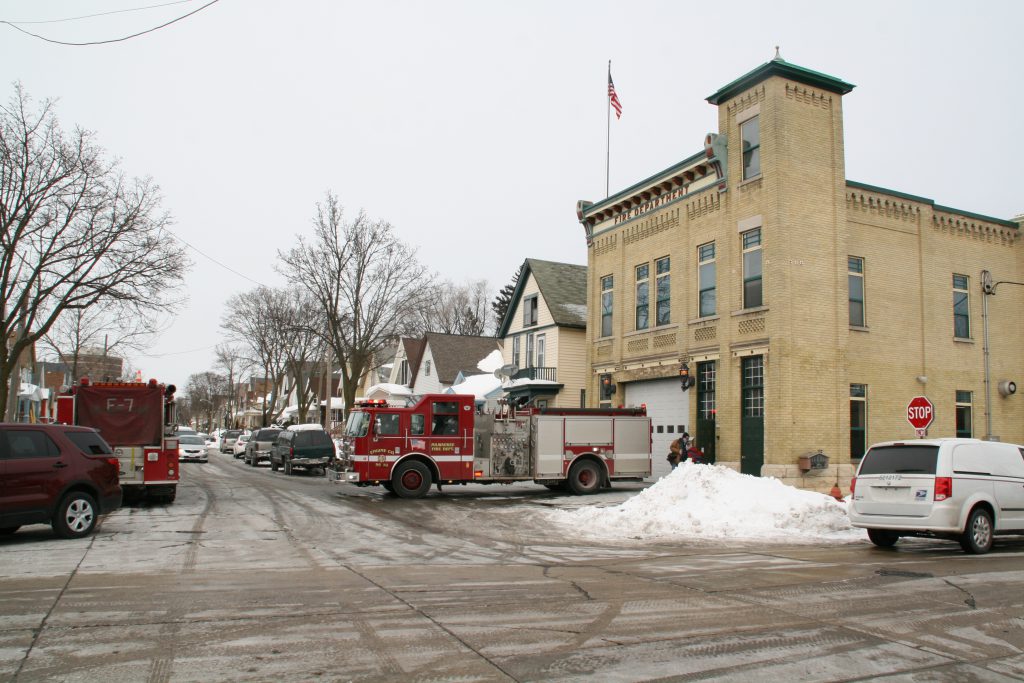What Two Fire Stations Will Milwaukee Fire Department Cut?
Or will an influx of Medicaid money stave off cut?
The Milwaukee Fire Department would shutter two engine companies and lose the equivalent of 22 full-time positions under Mayor Cavalier Johnson‘s 2023 proposed budget.
But Fire Chief Aaron Lipski is hoping to avoid the cut. “I do not sit before you with a money issue. I sit before you with a timing issue,” said Lipski to the Finance & Personnel Committee Friday morning.
The challenge, however, is the city doesn’t know when the Wisconsin Department of Health Services will begin issuing payments, and how much they’ll be for.
Prorating Chicago’s results with “very, very rough thumbnail estimates”, Lipski projected Milwaukee could receive between $8 million to $15 million annually. More conservatively, he estimated $5 million. An estimated timeline would have the city receiving the first payments in the second half of 2023.
The funding, which would originate with Medicaid, would close a growing gap in the cost of providing ambulance service. Wisconsin opted into the program years after other states and now DHS is setting up the necessary framework to provide the reimbursement grants.
The Common Council will ultimately need to vote to accept the funding, and then decide what to do with it. It is not required to use the money directly on ambulance service. And before the issue is sorted out, the council must craft a balanced budget that braces for a fiscal cliff induced by rising pension costs and state-imposed restrictions on revenues.
Calls volumes have increased, which the chief said was in large part caused by myriad factors stemming from the COVID-19 pandemic. Owing to a private ambulance service provider pulling out, MFD is also handling more ambulance calls. Lipski said the department is having to institute mandatory overtime.
“No one here at the council wants to make these cuts,” said Alderman Michael Murphy.
The proposal would eliminate one engine company at the start of 2023 and provide funding for only six months of another. The budget office modeled the six-month cut starting in July, but Lipski said MFD is considering idling an engine at the start and end of 2023. The schedule change would have more equipment available during the busier summer months. No layoffs are proposed under either scenario.
It would cost an estimated $2.55 million to reverse the proposed cut. But it might not prevent future cuts. Owing to revenue limitations, the city faces a structural deficit of more than $100 million entering 2024. The council has already approved using its American Rescue Plan Act grant to provide $5 million to bolster the private ambulance system and train new emergency medical technicians. The multi-million dollar need is expected to remain for several years, although the new ambulance reimbursement program could lessen its expense.
With future cuts to come, and a debate over how to stave off the latest cut, the council must also weigh another challenge: rising wages have eliminated the savings from many of the past cuts.
“Even when we make cuts we don’t save money,” said budget director Nik Kovac in summary of the paradoxical situation. The MFD budget would actually grow from $121 million in 2022 to $128 million in 2023 under Johnson’s proposed budget. Budget and policy manager Bryan J. Rynders said $5.6 million of the increase could be tied to salary and wage increases, including backpay on a new contract for members of Milwaukee Professional Fire Fighters Association, Local 215.
Committee members publicly lamented the tough choices that lie ahead. The city is also poised to cut library hours, reduce the size of the Milwaukee Police Department and plan for further cuts in 2024.
“If we don’t cut fire, we have to cut somewhere else, and I’m just not sure where else to cut,” said Ald. Scott Spiker, who said he remains a supporter for the department and chief. He called the situation between police and firefighters “a budgetary death match.”
The chief said he wouldn’t identify the proposed engines and corresponding station closures until later in October. That drew frustration from Alderwoman JoCasta Zamarripa, and a suggestion by Spiker that it could be a political strategy. Lipski said it was a matter of uncertainty and the need for more planning. He said the proposed cut will be designed to be as equitable as possible. The council will adopt its budget in early November.
But regardless of what engines will be cut, Lispki said he knows what will happen.
“I expect response times will grow longer,” said the chief. “We are always coming, but we’re coming from longer distances.”
As the chief and multiple council members discussed, that could cost lives or push structures past the point of repair. Lipski said it also changes how MFD fights certain fires, with delayed arrivals from ladder trucks and other backup units likely delaying how aggressive first responders are.
Across the four-hour hearing, Lipski did draw praise from multiple council members for the department’s expanding diversity, including in leadership, his willingness to communicate, commitment to the community and MFD’s efforts to prevent overdose and gun violence deaths.
Actual fires amounted to only 4.7% of MFD’s 2021 calls for service. A full 76.9% of the calls for service were for emergency medical service.
And while the council must figure out what it can do with the fire department, it also is hoping Johnson can strike a deal with the Wisconsin State Legislature and Governor.
Ald. Milele A. Coggs isn’t optimistic that the state will fully address the city’s fiscal issues, even if the legislature does allow the city a new sales tax or increase shared revenue. She said more cuts are coming. “It’s really just about how deep these cuts going to have to go over the next few years,” said the alderwoman.
More about the 2023 Milwaukee Budget
- City Hall: Council Overrides Mayor Johnson’s First Vetoes - Jeramey Jannene - Nov 22nd, 2022
- Mayoral budget vetoes to be taken up at Common Council meeting on November 22 - Common Council President Jose Perez - Nov 11th, 2022
- Mayor Vetoes Library, Fire Service Cut Restorations in 2023 Milwaukee Budget - Jeramey Jannene - Nov 11th, 2022
- Mayor’s Office Adds ‘Vision Zero’ Czar - Jeramey Jannene - Nov 8th, 2022
- Milwaukee Building New Cruise Ship Dock - Jeramey Jannene - Nov 7th, 2022
- Council Reverses Cuts, Raises Fees In Adopting 2023 Milwaukee Budget - Jeramey Jannene - Nov 4th, 2022
- City Hall: Council Beefing Up Negotiation Team In Advance of Public Safety Contract Talks - Jeramey Jannene - Oct 28th, 2022
- City Hall: Mayor, Council At Odds Over How To Prepare For Fiscal Cliff - Jeramey Jannene - Oct 27th, 2022
- City Hall: Proposed Budget Amendments Reverse Library, Fire Department Cuts - Jeramey Jannene - Oct 24th, 2022
- City Hall: Library Poised To Cut Services At 5 Branches In 2023 - Jeramey Jannene - Oct 14th, 2022
Read more about 2023 Milwaukee Budget here
Political Contributions Tracker
Displaying political contributions between people mentioned in this story. Learn more.
- May 7, 2015 - Nik Kovac received $10 from Cavalier Johnson
























